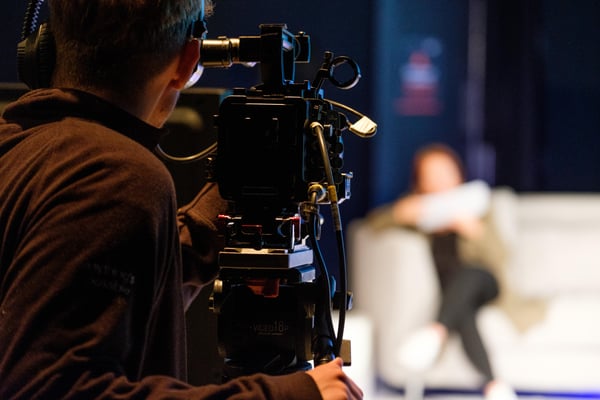Face-to-face events are wildly popular in helping companies achieve business goals. Live events are used as tools to increase employee engagement, communicate important messages and to reward employees. However, the events industry has been hugely affected by the Coronavirus pandemic. Organisations have been forced to either cancel their events or make them virtual. Over the last six months, virtual events have grown exceedingly in popularity, quickly becoming the new norm. Businesses still need to communicate with their employees and instil a sense of normality in these unprecedented times. We’ve looked here at the benefits virtual events and some of the reasons behind holding a virtual event, but what are your virtual options and how can they serve as an alternative to live events?
To begin, it’s important to understand what a virtual event is.
Virtual events have all the functionality and features of a live event, but instead of meeting under one physical roof, virtual events take place in shared virtual environments.
A virtual event can come in all shapes and sizes, but below are the four most common types of virtual event that we produce at DRPG:
Webinars:
In Layman’s terms, a webinar is an online workshop, lecture or presentation that encourages knowledge sharing and communication. Attendees can become participants through online chat and surveys, allowing them to engage with speakers and other attendees. Although webinars are live, they can be recorded and made downloadable for attendees to watch over and over again.

Live and studio broadcasts:
A broadcast is the distribution of information in the form of video content to a dispersed audience via an online, bespoke portal. The simplest and potentially most underrated or misconstrued form of virtual event is the live broadcast. Broadcasts can take place in a studio, or link presenters from across the globe, making them flexible and far reaching. There are many different styles of broadcast, such as on-the-sofa chat shows, team meetings, product launches and business updates to name but a few!
The virtual experience is the broadcast’s big brother. It encompasses the same elements and often involves a broadcast, but goes one step further to offer true interaction and mimic a live event as closely as possible in terms of audience engagement. Virtual experiences can look and feel like anything you want them to - a whole virtual 3D world, a virtual auditorium, a virtual break-out zone. The only limit is your imagination. Whether it’s a small conference or an entire exhibition that caters for a global audience, virtual experiences can have the capacity and capabilities to share the same level of detail that you’d see in the real world.

The hybrid event is the perfect blend of real world and virtual. It combines the strengths of a live, in-person event with a virtual online component to create a powerful and far reaching event. In many cases, the immersive environment and interactive experiences created by a live event are irreplaceable. However, as large gatherings are not possible at this time, hybrid events can offer an effective solution. There could be a team of people in one location, streaming their in-person event as an interactive webinar or webcast – this enables two options for attendees: be there in person, or attend the event from the comfort of your own home.
Whether you choose to utilise a webinar or harness the power of a complete 3D virtual world, my advice would be to make sure you still run your event. It is important that we adapt to the changing climate and although it is daunting, we still need to communicate. People still need to meet and at this time, collaboration is paramount.
Still not convinced?
For more research on the power of virtual events, take a look at our latest Whitepaper on the value of Broadcast Communications all about debunking myths around virtual events.
/DRPG%2045th%20Anniversary/DRPG%2045th%20White%20-%20No%20Text.png)


 Back
Back

/Blog%20Images/AEO%20SEO%20-%20Digital%20Blog.jpg)



